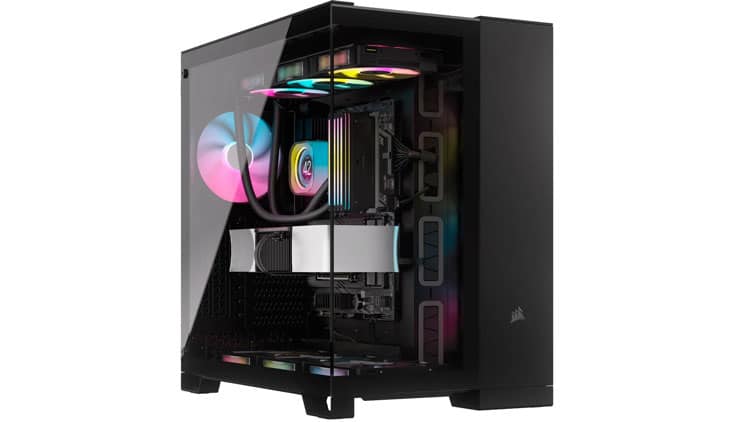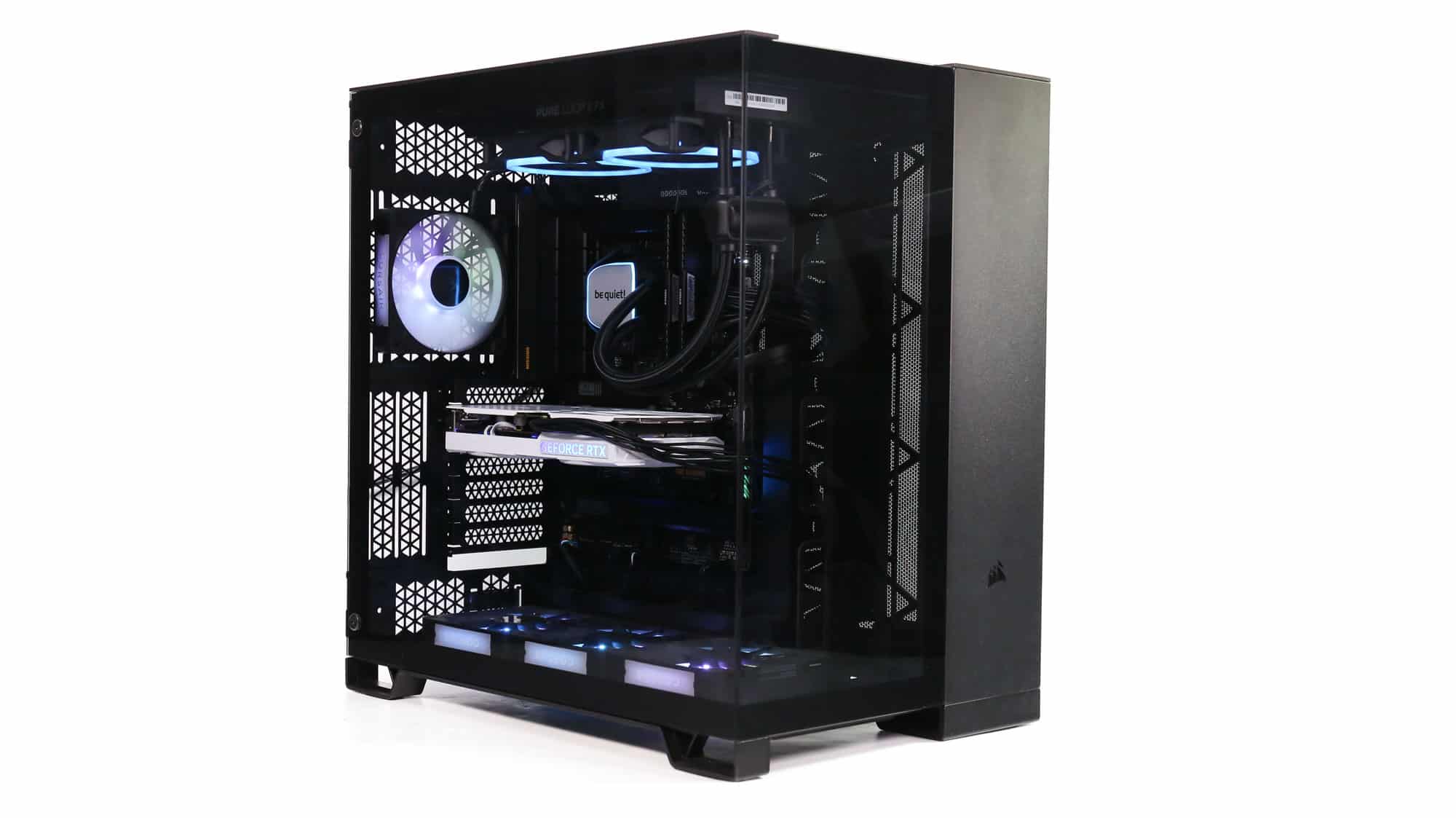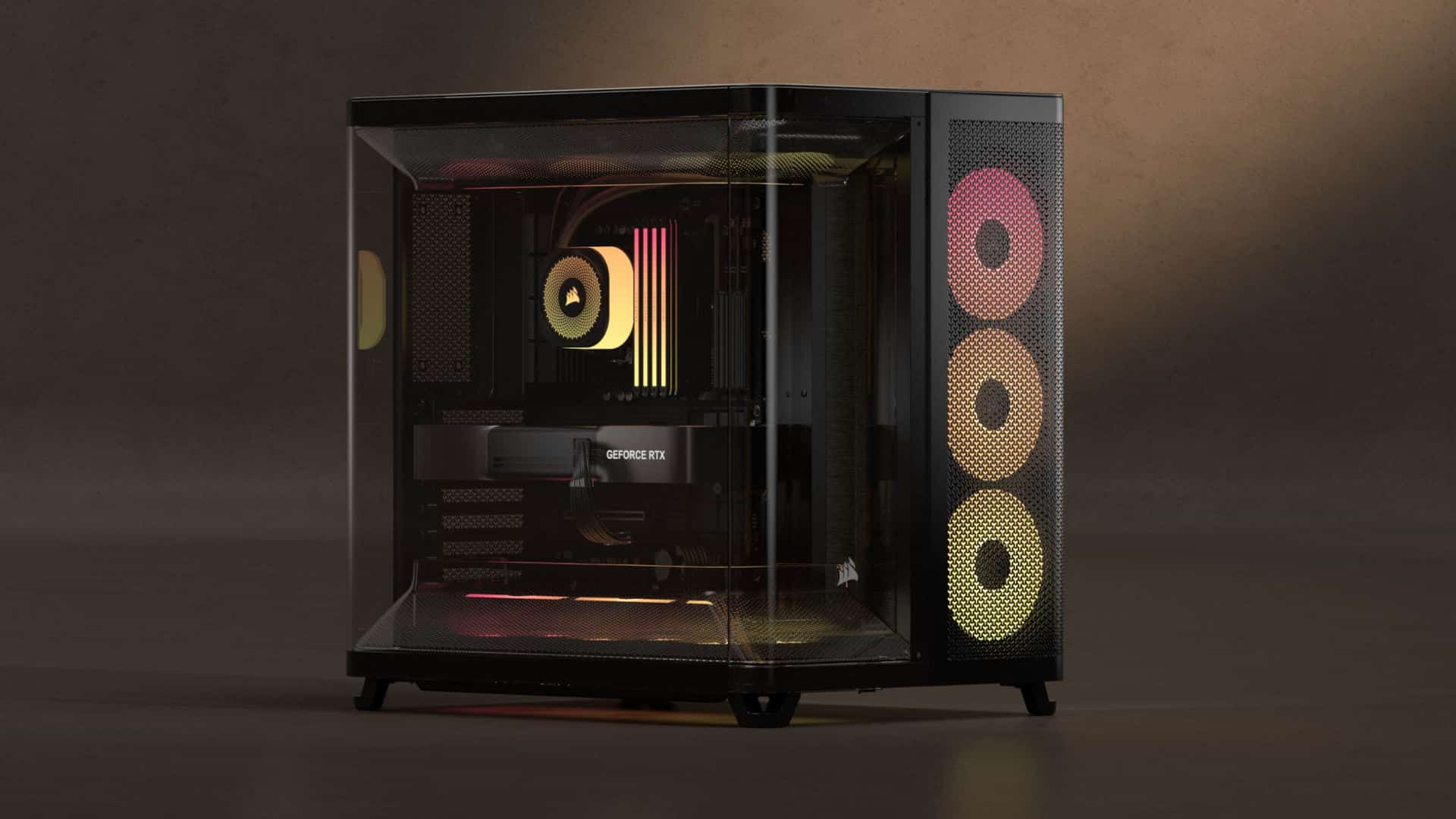Epilogue
The 6500 series is a well-rounded dual-chamber chassis, offering great looks and building options regarding component selection and placement. There is lots of space inside the chassis, but this also means you must install bulky components or many of them to fill the available space to achieve a good look. Corsair has also presented many first-party accessories, including replacement exterior panels, costing significantly extra nonetheless. This chassis is suitable for someone looking for a chassis like this and not mind spending money on it or explicitly wanting a reverse connector motherboard. Keep in mind that most dual-chamber reverse connector chassis on the current market carry a similar price tag.
Some of the setbacks we encountered were the unfortunate conflict between the HDD cage and reverse EPS connector, which necessitates the removal of an HDD. However, since this is a $199 chassis, we would also like to see some extras included (for example, a simple fan and ARGB hub).
In noise damping, the Corsair 6500X performs excellently, achieving a Cybenetics A+ rating, given to cases with over 8 dBA noise damping performance, which is not easy to reach. Usually, the better the noise-damping performance, the worse the thermal performance because good noise-damping requires an internal chassis that is as isolated as possible. Despite that, at low fan speeds, 25 dBA normalized noise output, the 6500x had a pretty good thermal performance, but I cannot say the same for the full fan speed test scenario. Although the 4x RX120 fans we used can spin at over 2100 RPM and hence are noisy, the thermal performance at full fan speed wasn’t the expected one. The thermal differences were low compared to other chassis we have evaluated in the past, but this was not the case for the average CPU and GPU frequencies during gaming and torture testing. This is why you should always look at the average clock frequencies. Looking at the operating temperatures alone, you don’t see the whole picture.
- Great build quality
- Large building space
- Competitive noise-dampening performance
- Supports reverse connector motherboards
- Large cut-out behind the motherboards for cooler backplates
- Enough room above and below the motherboard for radiators
- Supports up to three 360mm radiators
- Supports up to 10 case fans
- Great AIO compatibility
- Fused front panel connector
- Good tempered glass hinge design
- Bottom mesh filter removable from the front side
- All non-glass panels are covered in mesh
- A bit pricey
- No fans or hubs are included
- Mediocre thermal performance at high fan speeds
- Requires two USB 3 headers to use all front I/O Type A ports





What about the top and side panels coming warped out of the box ? And the awful filter material inside the side panel which can easily come loose. The mediocre cable management (having to buy straps), no support holder for PSU, no removable top rad bracket and almost no offset so eps cables a challenge when mounting AIO. Also the incredible weight. Antec c8 and others are built better and better value.
We didn’t face any issues with the top and side panels; otherwise, we would have written about it. I will also pass your comment about the side panel material to the reviewer to comment if he wants.
No support holder for the PSU? I didn’t understand that.
When mounting a top AIO most cases have an issue with the EPS cables, some even without a top-mounted AIO.
We will do more case reviews in the near future and will have more comparison data.
Thank you for your comments!